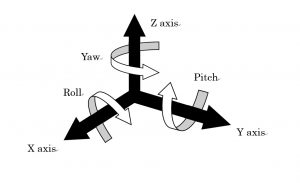Balance vs. Harmony Point
This series of articles combines many different approaches to meditation into a single framework for attaining mindfulness and transcendence. Last time we covered a simple yoga meditation that anyone can do to experience the differences between poses, balance, and Harmony Point. It showed how increasing awareness changes your place of balance.
It is this progression of balance to Harmony Point that is the common essence of meditation. It’s about increasing awareness to find a better place of balance. Harmony Point is the idealized state of balance that results from perfect awareness:
Harmony Point = Balance, plus Awareness
Increasing Awareness
Increasing awareness is a common goal among meditative traditions. In prior meditations, we accomplished it by using scanning. In the yoga meditation, we used sequential scanning (which is better for discovering unknowns), and in the hearing meditation, we used intensity based scanning (which is better for exploring knowns).
Today we’ll combine these two approaches to rapidly scan our entire physical body.
Advanced Scanning
Just like every yoga pose has an idealized place of balance, every place of balance has an idealized Harmony Point. To find it, we’ll add movement to our prior yoga meditation, targeting interim poses that are 2-3 inches apart. Then for each of these interim poses, we’ll increase awareness and find a new, better place of balance …
Advanced Scanning Meditation
- Complete the prior Yoga Meditation
- Choose a targeted yoga pose, transition, or stretch. (i.e. seated side stretch)
- Move your current pose 2-3 inches closer to your targeted pose
- Using Single Point Awareness, shift your focus up and down and across your body.
- Whenever you encounter a point of discomfort, focus on the discomfort, and explore how that point is affected by physical micro-movements (twist and rotate, stretch and compress, rock front to back/side to side, etc.)
- If these movements create discomfort in other parts of your body, move your focus there, and repeat step 5
- Once you have explored all points of discomfort, return to wherever you left off in your scanning.
- Repeat steps 3-7 until your transition to the targeted pose is complete.
- Return to your meditative yoga pose, and find your balance using the string through the top of your head.
- Anchor your state using expanded breathing.
At this point, you have combined sequential and intensity based scanning to increase awareness of your entire body. As part of a regular routine, varying these poses and stretches/transitions will help you to quickly attain total body awareness. It’s also a great way to prepare for the mental, emotional, and spiritual scanning that comes next.
Until next time …

